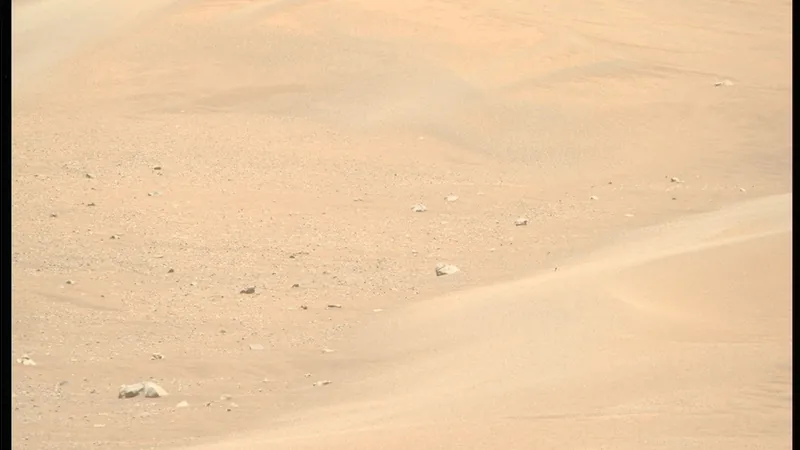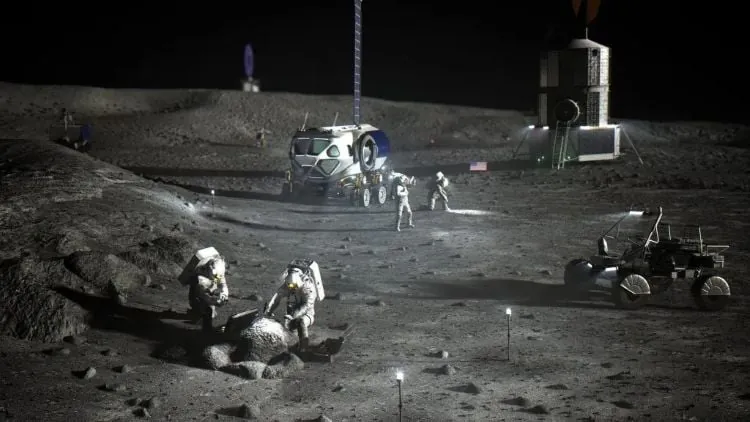
NASA's Perseverance Rover Discovers Stunning Wind-Carved 'Megaripples' on Mars!
2025-08-28
Author: William
A Stunning Discovery on the Red Planet!
NASA's Perseverance rover has unveiled an astonishing new image featuring colossal, wind-sculpted sand structures known as "megaripples" during its latest journey on Mars.
A Close Look at Kerrlaguna!
Captured on August 13, the photo showcases a mesmerizing field of these ridges at a location named Kerrlaguna. Here, Perseverance is diligently analyzing how Martian winds continuously shape the planet's landscape as part of an extensive mission to deepen our understanding of Mars in its current state.
The Unique Nature of Megaripples!
Megaripples are sandy ridges that can rise up to three feet (one meter) high and occupy a middle ground between smaller ripples and larger sand dunes. Experts believe these formations are remnants of a time when Mars boasted a thicker atmosphere and ferocious winds, hinting at significant climatic changes over millions of years. Some megaripples even show fractured crests, a testament to prolonged exposure to Mars' fluctuating conditions.
Inactive Yet Intriguing!
Interestingly, the megaripples at Kerrlaguna are labeled as "inactive," signifying that they haven't noticeably shifted for years. Unlike Earth's constantly transitioning ripples shaped by wind and water, Martian megaripples consist of fine sand encased beneath coarse grains, making them more resistant to movement.
Movement Still Exists!
However, high-resolution satellite studies reveal that some megaripples do indeed exhibit movement—albeit at a glacial pace of about one meter every nine Earth years. Though sluggish compared to their active dune counterparts, this slow drift indicates that the Martian surface remains geologically alive.
A Window into Mars' Climate History!
Some of the most active megaripples have been spotted in Mars' northern polar region, where winter carbon dioxide ice temporarily holds dunes and ripples in place. As warmer temperatures arrive in spring, the ice sublimates, awakening the sands for some lively action! Jim Zimbelman, a planetary geologist at the Smithsonian's National Air and Space Museum, noted how these long-term observations have allowed researchers to finally track megaripple movements.
Perseverance's Analytical Arsenal!
To further explore Kerrlaguna's features, Perseverance has deployed a suite of scientific instruments, including cameras and analytical tools that assess the chemistry and structure of Martian rock and soil. This research helps scientists to analyze sand grain sizes, layer formations, and the presence of potential salty crusts that might hint at past water interactions—valuable knowledge for future human explorers!
Learning from Mars' Geological Lab!
The rover’s chilly stop at Kerrlaguna comes after a challenging attempt to ascend a rocky slope towards a site named Midtoya. Despite some struggles with uneven terrain, Perseverance still gathered important data, notably analyzing a striking rock dubbed "Horneflya," known for its unusual medieval helmet-like shape.
What's Next for Perseverance?
This isn't the first time NASA has encountered Martian sand. Almost ten years ago, the Curiosity rover explored active dunes at "Namib Dune." While these active formations provide dynamic insights into surface changes, the slower-moving megaripples at Kerrlaguna play a crucial role in unveiling Mars' history.
Future Ventures Await!
Perseverance’s investigation at Kerrlaguna serves as just a teaser. The rover is set to head south to a more expansive field of megaripples at a location called "Lac de Charmes," where NASA has plans for a more extensive investigation.
"While our attention often leans towards ancient rocks that narrate Mars' past, we have so much more to learn about its modern environment," the agency stated.









 Brasil (PT)
Brasil (PT)
 Canada (EN)
Canada (EN)
 Chile (ES)
Chile (ES)
 Česko (CS)
Česko (CS)
 대한민국 (KO)
대한민국 (KO)
 España (ES)
España (ES)
 France (FR)
France (FR)
 Hong Kong (EN)
Hong Kong (EN)
 Italia (IT)
Italia (IT)
 日本 (JA)
日本 (JA)
 Magyarország (HU)
Magyarország (HU)
 Norge (NO)
Norge (NO)
 Polska (PL)
Polska (PL)
 Schweiz (DE)
Schweiz (DE)
 Singapore (EN)
Singapore (EN)
 Sverige (SV)
Sverige (SV)
 Suomi (FI)
Suomi (FI)
 Türkiye (TR)
Türkiye (TR)
 الإمارات العربية المتحدة (AR)
الإمارات العربية المتحدة (AR)